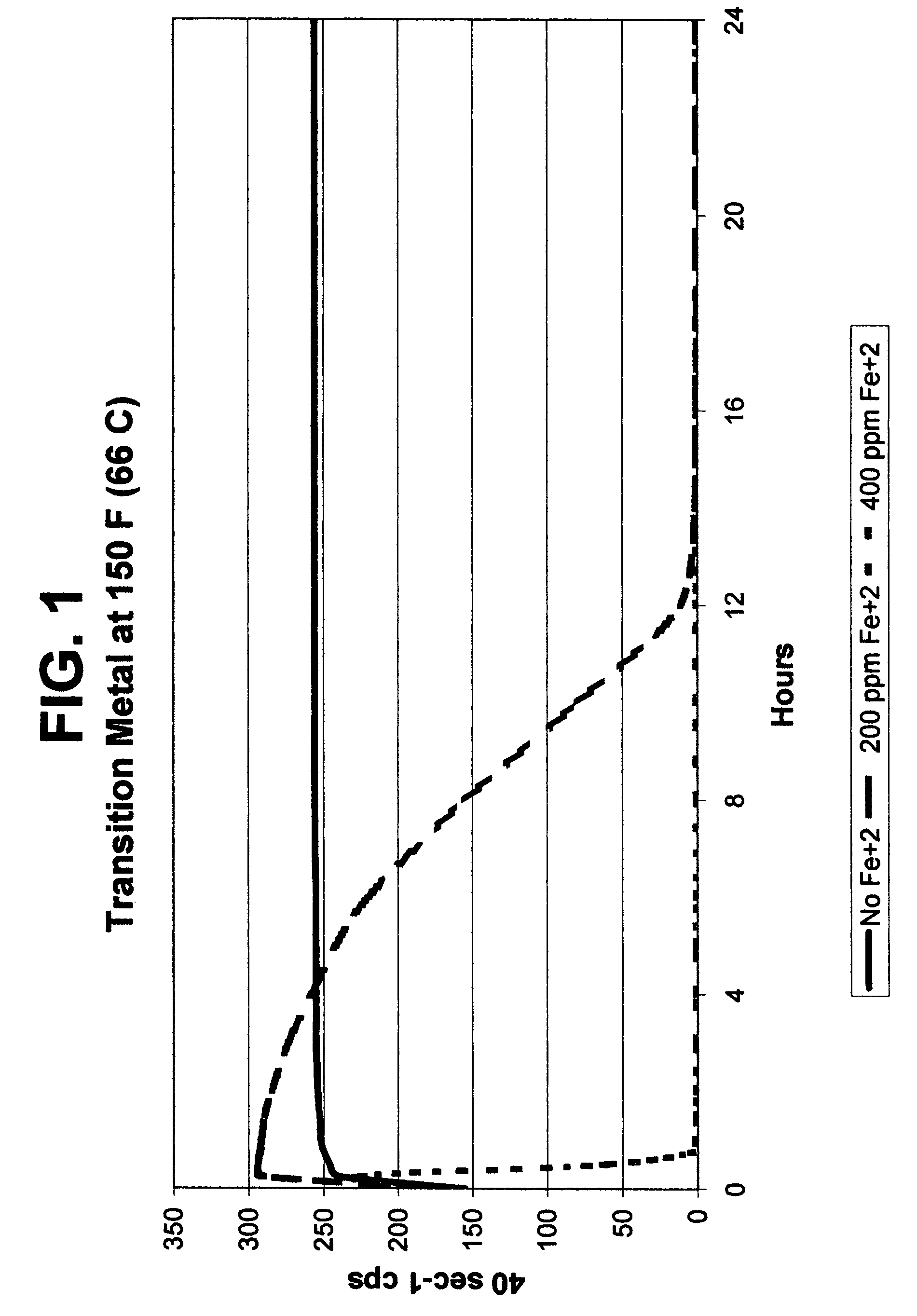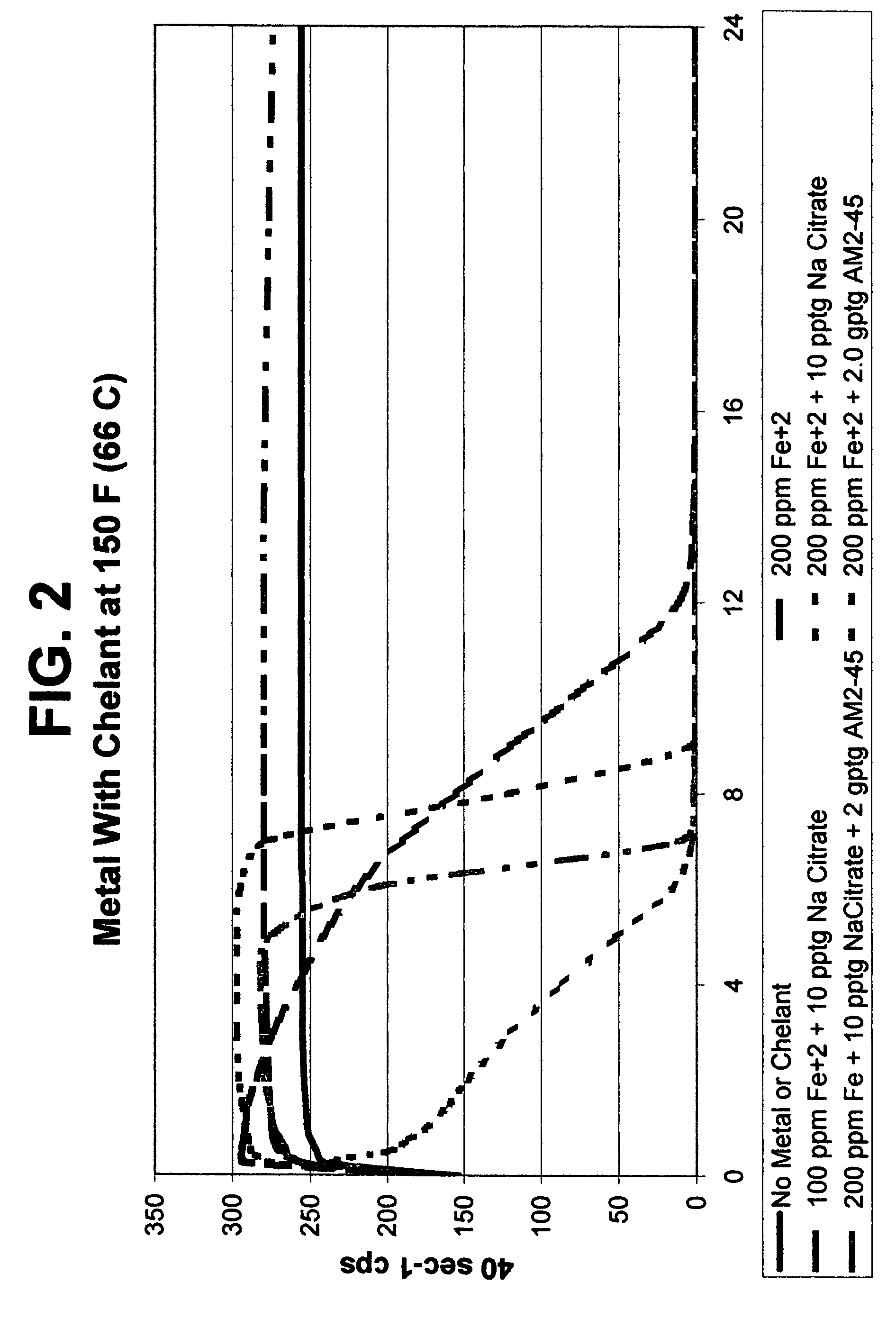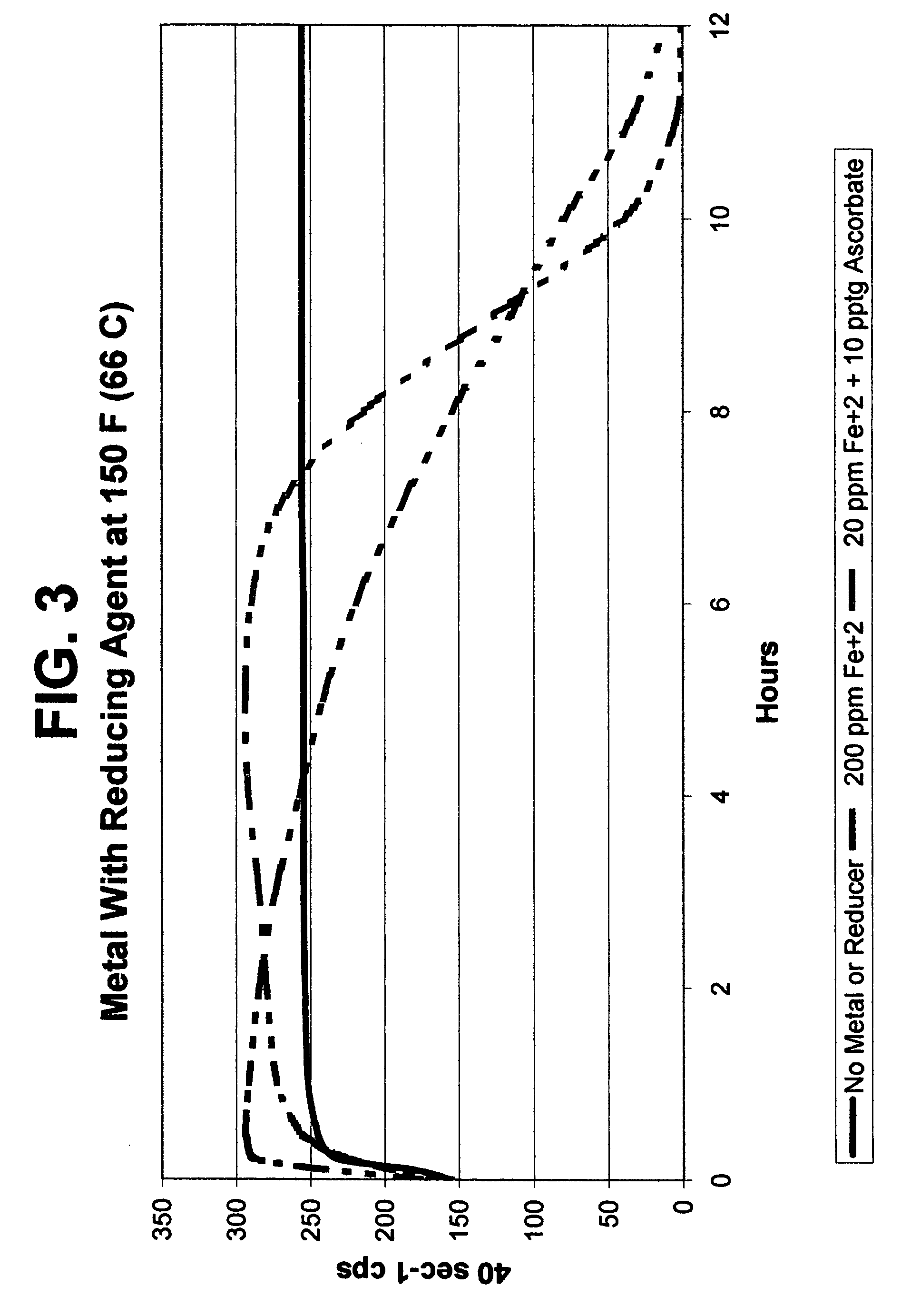Metal-mediated viscosity reduction of fluids gelled with viscoelastic surfactants
a technology of viscoelastic surfactants and gelled treatment fluids, which is applied in the direction of other chemical processes, well accessories, separation processes, etc., can solve the problems of fluid degradation, complex development of suitable fracturing fluids, and inability to close or heal completely cracks or fractures
- Summary
- Abstract
- Description
- Claims
- Application Information
AI Technical Summary
Benefits of technology
Problems solved by technology
Method used
Image
Examples
example 1
[0080]The results of Example 1 comparing no Fe+2 with 200 ppm Fe+2 and 400 ppm Fe+2 are shown in FIG. 1. The source of the Fe+2 was ferrous chloride. No other breaker components were added. This Example shows that a transition metal alone can readily break a VES-gelled fluid, either slowly or very quickly proportional to the amount of metal used. Unless otherwise noted, Examples 7-14 use a base fluid composition of tap water including 3% bw KCl and 4% bv WG-3L viscoelastic surfactant.
example 2
[0081]The results of Example 2 shown in FIG. 2 demonstrates that breaking rate can be enhanced by use of a chelant, and that the breaking profile (viscosity over time) can be altered and also enhanced by the type of chelant used. Test results with AM2-45 present show some chelants can give stable initial viscosity followed by very sharp breaking rate (viscosity reduction). The DISSOLVINE AM2-45 is a EDTA-(NH4)2H2 chelant available from Akzo Nobel. The data within FIG. 2 show that metal-mediated viscosity reduction can be enhanced by the addition of a combination of chelants or use of a one particular type.
example 3
[0082]The data from Example 3 plotted in FIG. 3 demonstrates that less amount of metal is required for VES viscosity break when activated by a reducing agent such sodium ascorbate. Note that the amount of Fe+2 was decreased by a factor of 10 when the sodium ascorbate was used.
PUM
| Property | Measurement | Unit |
|---|---|---|
| concentrations | aaaaa | aaaaa |
| concentrations | aaaaa | aaaaa |
| volume | aaaaa | aaaaa |
Abstract
Description
Claims
Application Information
 Login to View More
Login to View More - R&D
- Intellectual Property
- Life Sciences
- Materials
- Tech Scout
- Unparalleled Data Quality
- Higher Quality Content
- 60% Fewer Hallucinations
Browse by: Latest US Patents, China's latest patents, Technical Efficacy Thesaurus, Application Domain, Technology Topic, Popular Technical Reports.
© 2025 PatSnap. All rights reserved.Legal|Privacy policy|Modern Slavery Act Transparency Statement|Sitemap|About US| Contact US: help@patsnap.com



